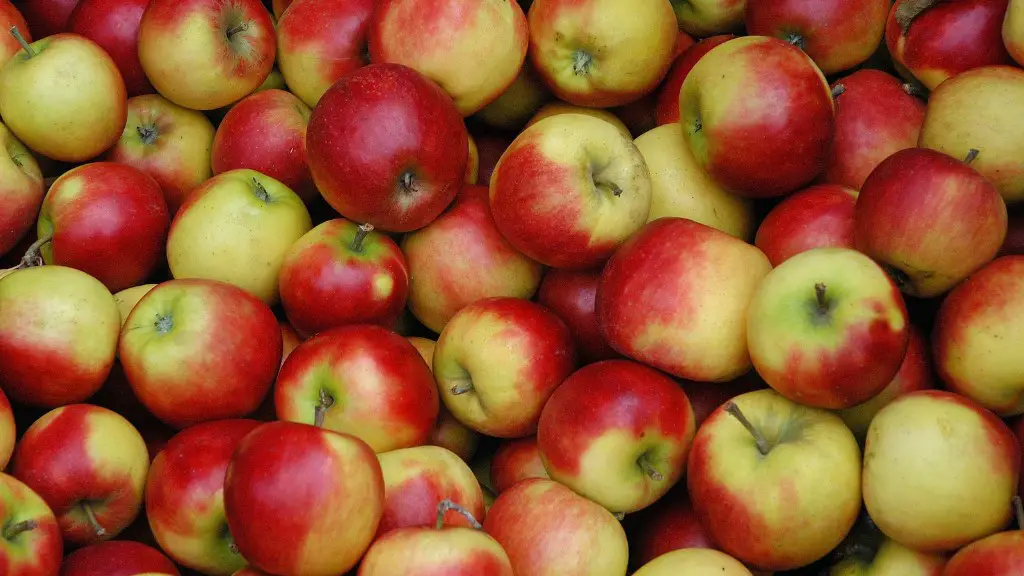A potted lemon tree, also known as a Citrus limon, is an attractive addition to any home. It may look like a daunting task to care for it, but with a few basic guidelines you can keep your tree healthy and productive. Knowing the proper amount of water to give your tree is one of the most important aspects of its care.
The frequency with which you water your lemon tree is dependent on a variety of factors. These include the size and type of pot, the type of soil, the watering schedule, the temperature, and the humidity of the environment the tree is in. Generally, a potted lemon tree should be watered when the top of the soil is dry to the touch – approximately every few days. If the temperature is especially high, more frequent watering may be required. Conversely, in cooler temperatures and during winter months, your tree may need a little less water.
When it comes to a specific amount of water, it’s usually best to go with the ‘soak and dry’ method. This requires that you fill the pot so that the soil is thoroughly moist and let it almost dry out before watering again. You should add water until there is a slight drainage at the bottom. During winter season, the tree should be watered less often, as it is dormant during this time. If the top layer of the soil is dried out, you can reduce the waterings to a minimum.
If your tree is planted in a container with poor drainage, you will need to be especially vigilant. Overwatering can cause root rot and damage to your tree. On the contrary, if the soil feels dry for more than a few days and the tree is starting to wilt, it’s likely your tree is underwatered. While it may be tempting to give your lemon tree a good soak when this happens, it’s better to just water it slowly and deeply until the moisture reaches throughout the root system.
When you water your lemon tree, it is essential to use water at room temperature. Cold water can shock the roots and damage or kill your tree. Also avoid using tap water with high salt content – it is best to use rainwater or distilled water instead. Lastly, always use a spray bottle while watering your tree and avoid wetting the leaves.
Fertilizing Lemon Trees
Adding a fertilizer can provide extra nourishment to your lemon tree and help it to thrive. During spring and summer, you should fertilize your lemon tree once a month using a balanced fertilizer. Fertilizers specifically for citrus trees are best, as they contain the appropriate nutrients for proper growth. Even during the winter season, when the tree is not actively growing, you may want to give it a dose of fertilizer to maintain a healthy root system and ensure the tree will bounce back in the next season. Always follow the instructions carefully and avoid overfertilizing, as this can burn the roots and damage your tree.
Pest and Disease Control
Keeping an eye out for pests and diseases is an important part of caring for a lemon tree. Aphids and scale insects are common insect pests. You can use a pesticide or basic soap and water spray to combat these pests. However, be sure to use pesticides responsibly and follow all instructions carefully to avoid damaging your tree. Fungal infections can sometimes be a problem, so make sure that the tree is planted in well draining soil and not overwatered. Diagnosing and treating diseases early is the best way to keep your tree healthy and productive.
Pruning Lemon Trees
Pruning your lemon tree prevents it from becoming overgrown and helps to encourage growth by removing dead and unhealthy branches. The ideal time to prune is in late winter or early spring, before the growing season. Make sure to use sharp pruning shears and carefully trim away any infected, diseased, or dead branches. Be sure to leave the healthy shoots and retain the natural shape of the tree.
Harvesting Lemons
Once your lemon tree is regularly producing lemons, it’s time to enjoy the fruits of your hard work. Large lemons should be left on the tree for the longest time possible, since too early a pick can leave them sour. Always use pruning shears or sharp scissors to harvest, as twisting or pulling can damage the branch. Lemons usually take 2-3 months to ripen, depending on the cultivar.
Protecting Lemon Trees from Frost
In regions where frost and cold temperatures are common, it is important to provide some winter protection for your lemon tree. The best way to do this is by wrapping the tree in a blanket. A light blanket over the tree at night should be enough protection against light frosts, but in areas with severe temperatures, a heavy frost blanket or burlap can help to insulate the tree and protect it from the cold.


